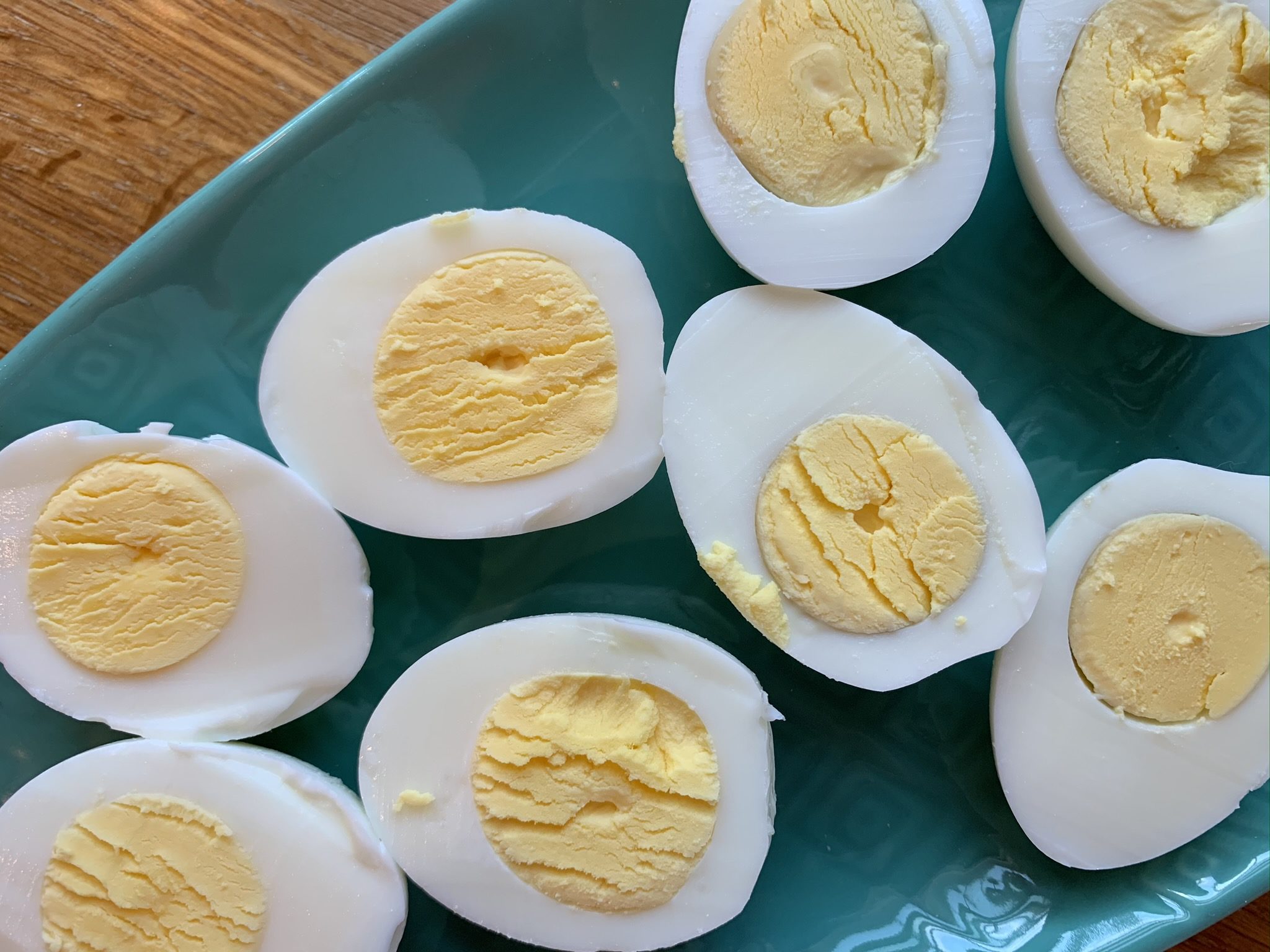Hard Boiled Eggs in Multi-Cookers
go.ncsu.edu/readext?675000
en Español / em Português
El inglés es el idioma de control de esta página. En la medida en que haya algún conflicto entre la traducción al inglés y la traducción, el inglés prevalece.
Al hacer clic en el enlace de traducción se activa un servicio de traducción gratuito para convertir la página al español. Al igual que con cualquier traducción por Internet, la conversión no es sensible al contexto y puede que no traduzca el texto en su significado original. NC State Extension no garantiza la exactitud del texto traducido. Por favor, tenga en cuenta que algunas aplicaciones y/o servicios pueden no funcionar como se espera cuando se traducen.
Português
Inglês é o idioma de controle desta página. Na medida que haja algum conflito entre o texto original em Inglês e a tradução, o Inglês prevalece.
Ao clicar no link de tradução, um serviço gratuito de tradução será ativado para converter a página para o Português. Como em qualquer tradução pela internet, a conversão não é sensivel ao contexto e pode não ocorrer a tradução para o significado orginal. O serviço de Extensão da Carolina do Norte (NC State Extension) não garante a exatidão do texto traduzido. Por favor, observe que algumas funções ou serviços podem não funcionar como esperado após a tradução.
English
English is the controlling language of this page. To the extent there is any conflict between the English text and the translation, English controls.
Clicking on the translation link activates a free translation service to convert the page to Spanish. As with any Internet translation, the conversion is not context-sensitive and may not translate the text to its original meaning. NC State Extension does not guarantee the accuracy of the translated text. Please note that some applications and/or services may not function as expected when translated.
Collapse ▲Have you given up on cooking the perfect hard boiled eggs in a traditional stove top pot? Maybe they are overcooked or not quite done enough or perhaps have that odd, greenish ring around the yolk. If you have a multi-cooker, there is a new technique that is super simple and does not require standing over your pot to check for boiling or time remaining.
Check out our Cooking with CatieJo video on Multi-Cooker Hard Boiled Eggs which includes two different cooking methods. If you search for recipes online, you’ll often see a 5-5-5 Method. We tested this and other version, termed 5-8-0- Method, for comparison. Here are the steps for the 5-8-0 Method:
- Add 1 cup cold water into your multi-cooker
- Gently add your eggs inside, trying to leave space between as much as possible
- Close and lock lid
- Turn valve to SEALING
- Turn on PRESSURE COOK and adjust to 8 minutes cooking time
- Allow it to come to pressure (about 5 minutes) & cook (8 minutes)
- Immediately manual release (0 minutes) the pressure value, using tongs or dish towel to prevent hot steam from burning you, & wait for indicator to drop
- Unlock lid and gently place cooked eggs in ice water for 5 minutes to stop the cooking process (do not force lid open; wait a few moments before trying again if it does not easily open)
- Ready to peel and eat!
For the 5-5-5 Method:
- Follow steps 1-4 the same
- Turn on PRESSURE COOK and adjust to 5 minutes cooking time
- Allow it to come to pressure (about 5 minutes) & cook (5 minutes)
- Allow it to naturally release for 5 minutes (it will start a new cooking time after the initial cook is over)
- Manually release pressure valve and wait for indicator to drop
- Unlock lid and gently place cooked eggs in ice water for 5 minutes
- Ready to peel and eat!
You’ll notice the comparison between the two methods at the end of the video. The 5-5-5 results in a slight greenish ring, while the 5-8-0 were all perfectly yellow throughout. If that doesn’t bother you, go with either! If you have a tendency to forget to release after the 5 minutes of natural release (and end up cooking it too long), the 5-8-0 may be a better option for you.
When you are preparing your eggs, remember that raw, shell eggs still need to be kept cool until use: keep them under 45 degrees F. Once cooked, they need to be eaten immediately or cooled back to under 41 degrees F within 6 hours. It’s not exactly simple to get a temperature reading when it is still shelled, but the ice water bath helps cool it down quickly, and then can be placed back in the fridge, if not consuming immediately. Hard boiled eggs that are still in their shell can be kept in the refrigerator for up to 7 days.
5-8-0 Method on left; 5-5-5 Method on right





